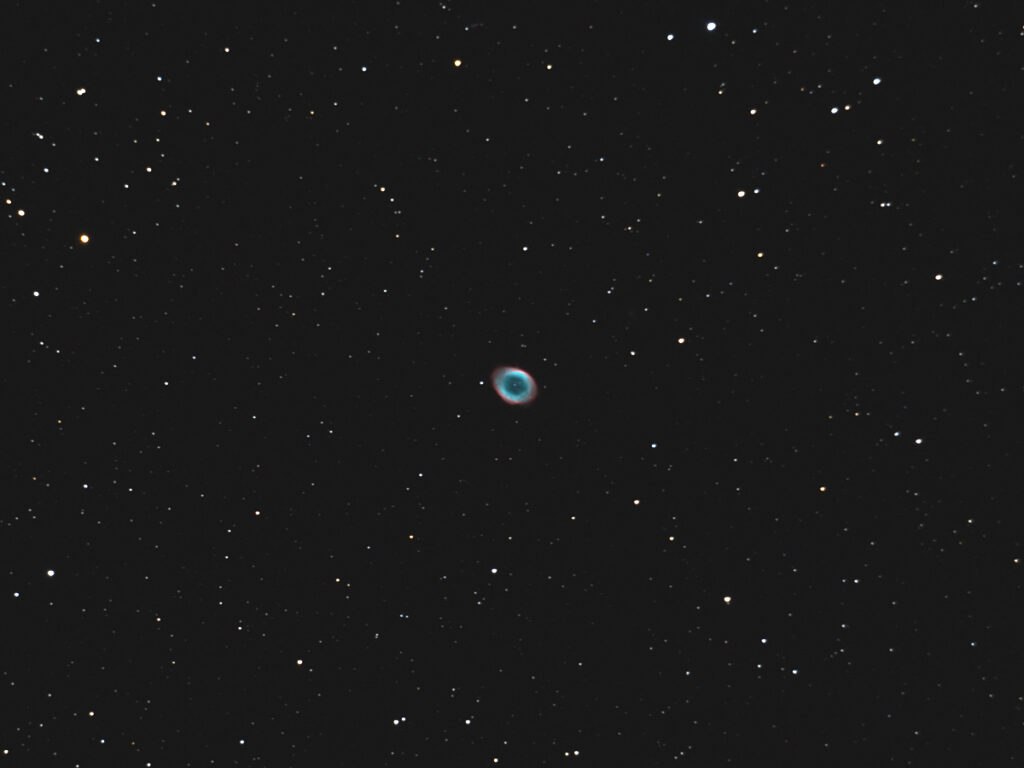
Telescope: Meade SN10 at f/4, Orion Atlas EQ-G
Camera: QHY 268c, Mode 0, Gain 30, Offset 30, -10C
Filter: GSO IR Blocking Filter
Guide scope: Williams Optics 50mm, ASI290MM mini, PHD
Exposure: 52x120sec, saved as FITS
Darks: 26×300 sec
Flats: 64×0.1 sec, tee shirt flats taken at dusk
Average Light Pollution: Red zone, poor transparency, haze
Lensed Sky Quality Meter: 18.4 mag/arc-sec^2
Stacking: Mean with a 1-sigma clip.
White Balance: Nebulosity Automatic
Software: SharpCap Pro, Nebulosity, Deep Sky Stacker, Photoshop
The Ring Nebula is an example of a planetary nebula; shells of gas thrown off from a star late in its light forming an expanding bubble set aglow by the core of the dying star at its center. Visually, The Ring appears as a tiny ghostly smoke ring about the size of Jupiter. The nebula itself is not actually a ring, but more likely a torus or a short hour-glass, we just happen to the looking down the long axis, giving the nebula its characteristic shape.
M57 is well placed throughout the summer months and is currently rising in the northeast as the sky darkens.
Recent Comments